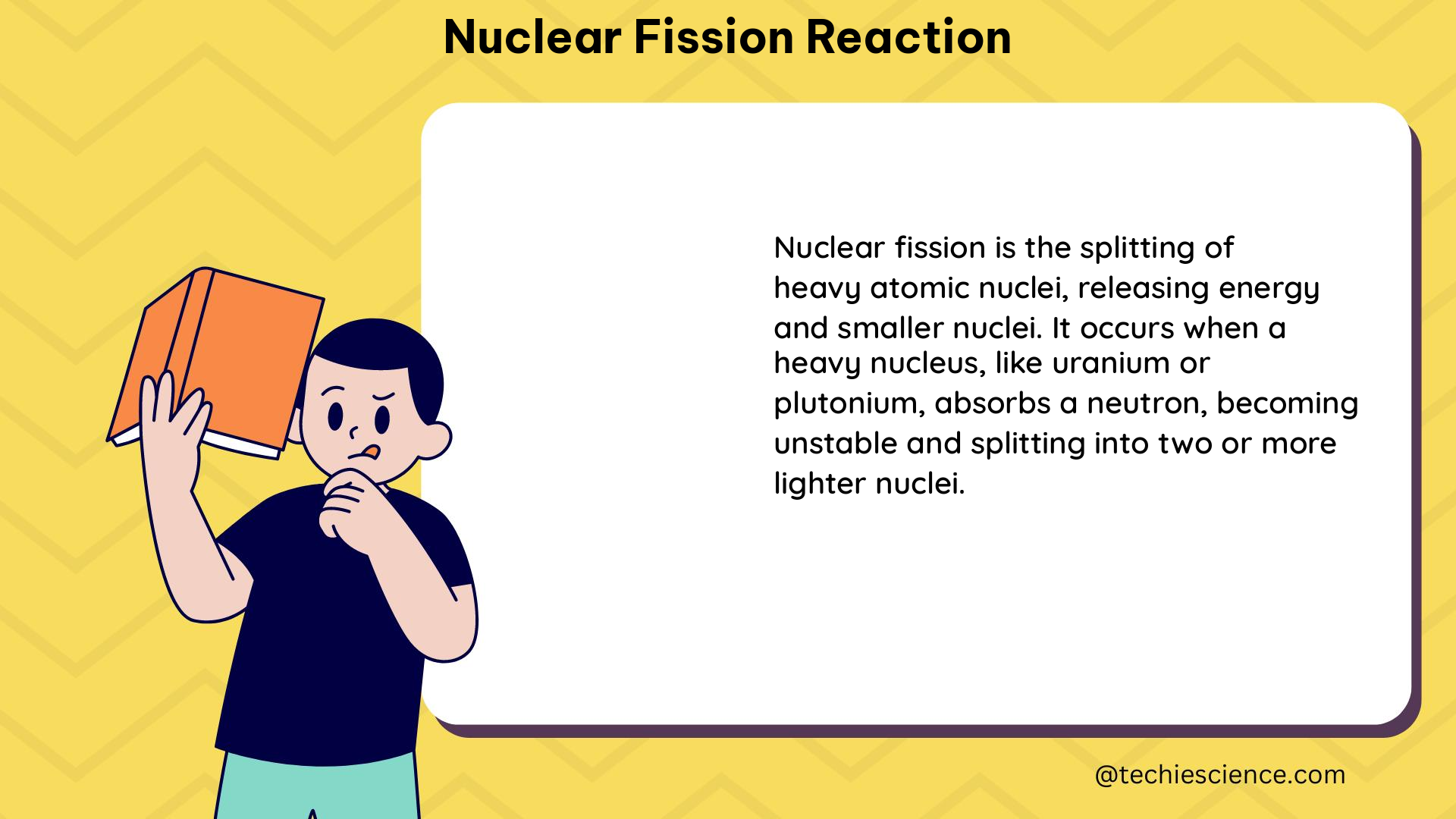Nuclear fission reactions involve the splitting of a heavy atomic nucleus into two massive fragments, releasing a significant amount of energy in the process. The energy released in a typical fission event is about 200 MeV (200 million electron volts), which is equivalent to roughly 2 trillion kelvin for each fission event. The exact isotope being fissioned has only a small impact on the amount of energy released, with the average binding energy of actinide nuclides being around 7.6 MeV per nucleon, and the binding energy of fission products tending to center around 8.5 MeV per nucleon.
The Fission Cross-Section and Energy Barriers
In the case of uranium-235, the fission cross section is a million times higher than that of uranium-238 at lower neutron energy levels. This is due to the fact that the absorption of any neutron makes available to the nucleus binding energy of about 5.3 MeV. For uranium-238, an additional 1 MeV is needed to cross the critical energy barrier for fission, which is provided when the uranium-238 adjusts from an odd to an even mass. In contrast, uranium-235 does not require this additional energy, as it has a higher fission cross section at lower neutron energy levels.
The fission of uranium-235 by a slow neutron yields nearly identical energy to the fission of uranium-238 by a fast neutron. This energy release profile holds for thorium and the various minor actinides as well. The reason for this is that the binding energy of the fission products is the primary factor determining the energy release, rather than the specific isotope being fissioned.
The Fission Process and Timescales

After an incident particle has fused with a parent nucleus, if the excitation energy is sufficient, the nucleus breaks into fragments. This process is called scission, and it occurs at about 10^−20 seconds. The fragments can then emit prompt neutrons at between 10^−18 and 10^−15 seconds. At about 10^−11 seconds, the fragments can emit gamma rays. Finally, at 10^−3 seconds, beta decay, beta-delayed neutrons, and gamma rays are emitted from the decay products.
Binding Energy and Fission Yields
The average binding energy of actinide nuclides is around 7.6 MeV per nucleon, while the binding energy of fission products tends to center around 8.5 MeV per nucleon. This difference in binding energy is the primary driver of the energy release in nuclear fission reactions.
The fission yield, which is the relative abundance of the various fission products, is determined by the specific nuclear properties of the parent nucleus and the incident particle. For example, the fission of uranium-235 by thermal neutrons typically produces a bimodal distribution of fission products, with peaks around mass numbers 95 and 135. In contrast, the fission of uranium-238 by fast neutrons produces a more even distribution of fission products.
Numerical Examples and Calculations
To illustrate the energy release in a nuclear fission reaction, let’s consider the fission of uranium-235 by a thermal neutron:
The energy released in the fission of uranium-235 by a thermal neutron is approximately 200 MeV. This can be calculated as follows:
- The mass of the uranium-235 nucleus is 235.0439 u (atomic mass units)
- The mass of the two fission fragments (e.g., barium-141 and krypton-92) is approximately 232.9 u
- The mass difference between the reactants and products is approximately 2.1 u
- Using the formula E = mc^2, where c is the speed of light, the energy released is approximately 200 MeV
Similarly, the fission of uranium-238 by a fast neutron also releases approximately 200 MeV of energy, due to the similar binding energies of the fission products.
Figures and Data Points

Figure 1: Schematic representation of a nuclear fission reaction.
Table 1: Binding energies of selected nuclides involved in nuclear fission reactions.
| Nuclide | Binding Energy (MeV/nucleon) |
|---|---|
| U-235 | 7.6 |
| U-238 | 7.6 |
| Ba-141 | 8.5 |
| Kr-92 | 8.5 |
Conclusion
In summary, nuclear fission reactions are complex processes that involve the splitting of heavy atomic nuclei into two or more fragments, releasing a significant amount of energy in the process. The energy release is primarily determined by the difference in binding energy between the parent nucleus and the fission products, rather than the specific isotope being fissioned. The fission process occurs on extremely short timescales, with various decay products being emitted at different stages. Understanding the intricacies of nuclear fission reactions is crucial for the development of nuclear energy technologies and the safe handling of radioactive materials.
Reference:
- Spontaneity of nuclear fusion: a qualitative analysis via classical thermodynamics, https://www.ncbi.nlm.nih.gov/pmc/articles/PMC10446017/
- Nuclear Energy – Introductory Chemistry – 1st Canadian Edition, https://opentextbc.ca/introductorychemistry/chapter/nuclear-energy/
- Nuclear fission, https://en.wikipedia.org/wiki/Nuclear_fission

The lambdageeks.com Core SME Team is a group of experienced subject matter experts from diverse scientific and technical fields including Physics, Chemistry, Technology,Electronics & Electrical Engineering, Automotive, Mechanical Engineering. Our team collaborates to create high-quality, well-researched articles on a wide range of science and technology topics for the lambdageeks.com website.
All Our Senior SME are having more than 7 Years of experience in the respective fields . They are either Working Industry Professionals or assocaited With different Universities. Refer Our Authors Page to get to know About our Core SMEs.